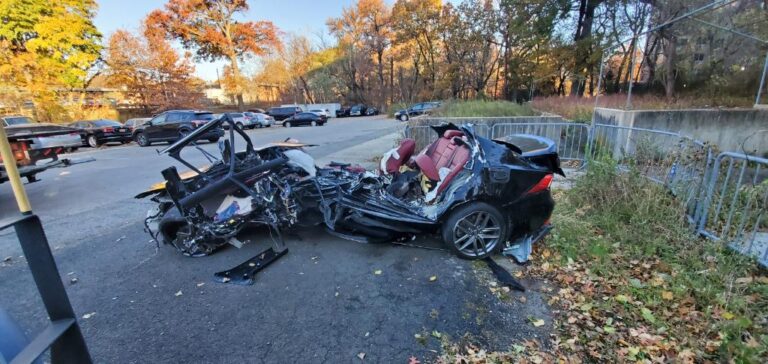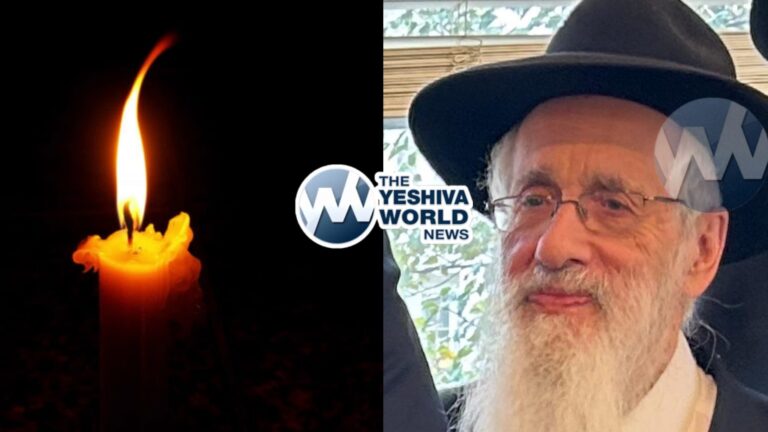By Rabbi Yair Hoffman for Five Towns Jewish Times
This article is dedicated for the Refuah Shleima of Reb Boruch Zev Ben Bracha.
There is a great debate that has gone on in Torah circles for almost three centuries now. The debate centers upon the following question: What texts we should be following? Do we follow the Shulchan Aruch and Talmud or do we follow the Siddur? This debate centers around one particular bracha – one that occurs in Nissan. [Most Poskim allow it to be recited in Iyar as well, particularly when the trees have not blossomed by this time, see, for example, responsa of Rav Ovadiah Yoseph.]
THE TALMUD AND SHULCHAN ARUCH
The Talmud (Brachos 43b) tells us that during the month of Nissan, when one goes out and sees trees blossoming recites the blessing, “Who has not left lacking in His world etc.”
The wording is either “shelo chiser beolamo klum” or “shelo chiser beolamo davar.” The Talmud uses the word “Klum” which means nothing. The version in the current editions of the Siddur have the word “Davar” meaning “something.”
The Shulchan Aruch (OC 226) and all the Rishonim use the word “Klum.” The Rambam in his Mishna Torah (and all manuscripts of the Rambam Oxford and Teiman) also utilize the term Klum. The Dikdukei Sofrim which has numerous alternative Talmudic texts from manusceipts has no mention of the term “Davar.” Dayan Weiss in his response work (Minchas Yitzchok Volume X #16) writes that the wording “Davar” is incorrect and should be stopped.
WHERE DID “DAVAR” COME FROM?
The question is: where did the word “Davar” originate from? Who started it and what was the motivation?
Let us take a little history trip in order to discover the origin.
Apparently, sometime in the late 1600’s or early 1700’s a very erudite and learned gentile converted in the city of Amsterdam and took on the name Israel Ben Abraham. He immigrated to Germany and worked as a setter in various printing houses there. In 1716, he purchased the printing equipment of Moses Benjamin Wulff and launched his own printing house in Koethen, Germany.
Wulff used to print in Dessau but permission to print there was rescinded. The equipment had been transferred to another Ger Tzedek who printed in Halle. Printing in Halle soon came to an end as well, and the equipment went back to Moses Benjamin Wulff who transferred it to Israel Ben Abraham.
In Koethen, Israel Ben Abraham ran into some problems because it was city that did not allow for the residence of Jews. It also did not permit books to be published in Hebrew only. For a book to be published it needed to also be in the vernacular. There he printed the Rosh Yoseph, Derech HaChaim, Derech HaKodesh, and the Orchos Tzaddikim. These were printed in 1717 and 1718. He had the assistance of Rabbi Yishayahu Ben Isaac and Rabbi Chaim Ben Abraham Gomprecht.
Israel Ben Abraham needed to relocate, however, in order to further develop his printing house. He moved his operations to Jessnitz, also in the Anhalt district which is now the state of Saxony in Germany. He brought his workers from Koethen and also obtained the assistance and backing of a number of wealthy court Jews.
One of them was Issachar HaLevi Bermann Behren Lehman of Halberstadt. There he printed the Shaarei Durah, the Alshich’s work, the Damesek Eliezer and, most significant to our story, in 1724 -Reb Zalman Henna’s “Beis Tefillah.” A number of tractates of the Talmud were printed there as well. A good overview of the history of the printing house in Jessnitz can be found in Marvin Heller’s “Printing the Talmud.”
REB ZALMAN HENNA
Reb Zalman Henna, also known as Reb Shlomo Zalman Ben Reb Yehudah Leib from Henna, was a noted grammarian who authored several works on Hebrew grammar. Sefer Zohar HaTeiva is one such book that can be found on Hebrewbooks.org. His grammatical explanations are interesting, but at times diverge from Talmudic sources. It may also be noted that the word “Klum” does not appear in TaNaCh. The general trend of Hebrew grammarians at the time (and even later) was purism. Henna may have theorized that since Klum did not exist in TaNaCH – the original version must have been “Davar.”
Regardless, this was the first time the term “Davar” in regard to the blessing on trees was printed in a Siddur. The Siddur of Rabbi Yaakov Emden, “Bais Yaakov” disagrees with the Jessnitz Siddur, but does not attack him on it.
Rabbi Yaakov Lorberbaum’s Siddur, “Derech HaChaim” is the next to appear with the word Davar – but this was done by the printers. Rav Lorberbaum is also the author of the Nesivus HaMishpat.
It seems to this author that the author of the work Maaseh Chemed, Rabbi Eliyahu Cohen, who attributes this version to the Raavad in his Sefer HaEshkol is incorrect and that the wording was a later addition not found in the original manuscripts or prints of that work.
DAYAN WEISS
Dayan Weiss in his Minchas Yitzchok Volume X #16 writes that he has not seen it earlier than the work Schios Chemda printed in Vienna, however. We have shown, however, an earlier printing of it. Regardless of the first source, Dayan Weiss has strongly discouraged the use of “Davar” in the blessing.
So where did it come from? Some Poskim have suggested that it was a correction to the Talmudic formulation of the word because the word Davar is found in the book of Dvarim (2:7), where it states, “Hashem Elokecha imach lo chasarta davar.” Still, though, it is rather difficult to make an emendation in the Talmudic text with no other extant version that would have that text.
NEW THEORY
This author would like to suggest that Reb Zalman Henna, as brilliant as he was, may have held himself to be a superior grammarian to the earlier authorities, including the Rishonim and Gaonim. Perhaps he felt that it was not conceivable that the sages would have enacted a blessing with a formulation of their own that lies in contrast to a similar Biblical formulation. That combined with the lack of the term “Klum” in TaNaCH may have clinched his decision. He, therefore made the change, perhaps in conjunction with Israel Ben Abraham as well, who also had innovative tendencies. Other prayer books followed suit by dint of the fact that Reb Zalman Henna was well known as a grammarian of distinction. There may have been an intimidation factor here.
HALACHIC WORKS HOLD FAST
The halachic works, however, held fast and did not change. Gradually, most of the Siddurim, with some notable exceptions (such as that of the first Lubavitch Rabbi) adopted the work of Reb Zalman Henna – not only in terms of the formulation of this blessing, but in other issues of grammar too. They did not necessarily openly admit to it, perhaps because they felt that grammar was not their area of expertise. In a similar vein, it could very well be that the Bnei Torah who punctuate texts in our times that have vowelization incorporated inside the work also may take a lead from the vowelization developed by someone else.
Regardless, as to how and why the change evolved, it is the view of our leading Poskim that we revert back to the formulation found in the Gemorah and in the Shulchan Aruch.
The author can be contacted at [email protected]











One Response
Henna was not a Rav. Only a teacher of Dikduk. The Gra criticized him for making up new rules of Dikduk not found in the Rishonim.
He indeeed changed Ilanos Tovos to Ilanos Tovim which is against every nusach in the Gemora, the Rishonim and shulchan Aruch.
Many other shinuyim are in todays siddurim which were accepted by the printers, but not the Gedolim of the day.